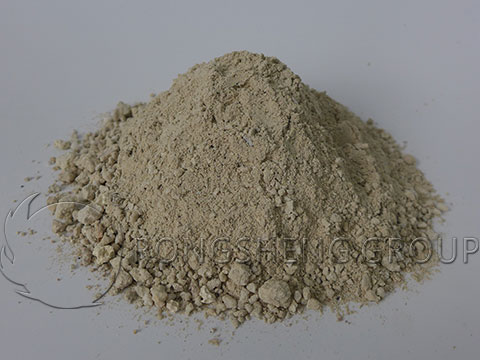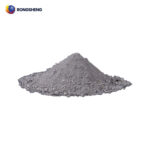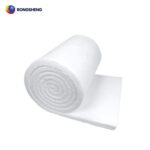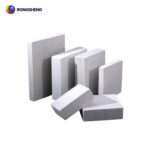Which Lightweight Refractory Castable Has the Lowest Thermal Conductivity?
The thermal conductivity of lightweight refractory castables is affected by many factors, including the material’s composition, structure, density, and operating temperature. Therefore, it is difficult to generalize which material has the lowest thermal conductivity. lightweight insulating castable refractory. However, some specific lightweight refractory castables do have lower thermal conductivity. The following are some lightweight refractory castables with relatively low thermal conductivity:
Some lightweight refractory castables with relatively low thermal conductivity
- Alumina ceramics: They can withstand high temperatures while offering excellent thermal insulation and corrosion resistance. They are often used for thermal insulation in high-temperature environments.
- Ceramic fiber: They can also withstand high temperatures and offer excellent thermal insulation, making them a preferred material for high-temperature insulation.
- Silicate fiber: They are inorganic, non-metallic materials with low thermal conductivity and excellent insulation properties. They are often used to improve the thermal insulation performance of equipment.
- Mullite lightweight castable: Composed of high-strength refractory aggregate, ultrafine powder, and composite additives, they offer high refractory resistance, high strength, and low thermal conductivity, making them suitable for industrial furnaces that need to reduce heat energy consumption.

In addition, lightweight insulating castables formulated with lightweight materials such as perlite, vermiculite, and refractory fibers also offer low strength and low thermal conductivity.
Please note that the selection of these lightweight insulating castable refractory materials should be determined based on the specific application environment and requirements. At the same time, thermal conductivity is also affected by factors such as material preparation process and microstructure. Therefore, in practical applications, it may be necessary to conduct experiments to determine the most suitable lightweight refractory castable for a specific application environment.
Lightweight Mullite Castable
Lightweight mullite castable is a high-performance refractory material formulated with lightweight aggregate, powder, binder, and admixtures. It uses porous mullite as the aggregate, with the primary crystal phase accounting for over 70%. The binder is pure calcium aluminate cement or aluminate cement, blended with mullite fine powder, alumina fine powder, silica fume, and other additives.
It offers high strength and low unit density, reducing structural weight by approximately 30% compared to conventional low-cement castables. This eliminates safety hazards such as broken bricks and collapse. Its excellent thermal insulation and low thermal conductivity can effectively reduce kiln heat loss by 25%-35%, saving approximately 10% in fuel. Furthermore, it is easy to construct and can be cast on-site as a whole or prefabricated for assembly and installation. It exhibits excellent resistance to rapid cooling and heating, superior spalling resistance to heavier castables, and some resistance to metal corrosion. Add water during mixing, keeping the amount between 5% and 8% (depending on the grade). Excessive water addition will increase porosity and reduce strength. Stir for 5-8 minutes to ensure thorough mixing of the aggregate and binder. Use an inserted vibrator to vibrate until the surface is slurry (avoid excessive vibration that may cause aggregate sedimentation), especially ensuring that corners are densely packed.
Compared to lightweight high-alumina castables: Mullite, as the primary crystal phase, offers superior high-temperature stability (creep and thermal shock resistance) compared to high-alumina materials (primarily corundum and aluminosilicates). Especially when used for extended periods above 1200°C, its structure is more stable, less susceptible to strength loss due to crystal phase transformation. Compared to lightweight clay castables, its higher alumina content increases its refractoriness by 200-300°C, making it suitable for medium- and high-temperature kilns (1000-1400°C). Clay castables are primarily used for temperatures below 800°C. It has a wide range of applications. It is primarily used in kilns, thermal equipment, flues, and chimneys in industries such as metallurgy, machinery, petrochemicals, power generation, and building materials, serving as both working linings and thermal insulation.
In short, lightweight mullite castable is a material with excellent performance and a wide range of applications. It meets the high-temperature energy-saving requirements of industrial kilns and provides excellent structural strength, weight reduction, and thermal insulation.




